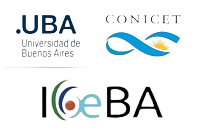Sanci Romina & Panarello Héctor
2 024
Acta Geochimica, 8 March 2024
The magnitude and spatial variability of CO2 surface emissions and processes involving CO2 released to the atmosphere from the soils are relevant issues in the context of climate change. This work evaluated CO2 fluxes and 13C/12C ratio of vegetation, organic matter, and soil gases from no disturbed soils of Chaco Pampean Plain (Argentina) with different soil properties and environmental conditions (PL and PA units). Soil organic decomposition from individual layers was accompanied by δ13C of total organic carbon (δ13C-TOC) values more enriched to depth. δ13C-TOC values in the upper soil profile ~ ca. 0–15 cm were like the plant community of this area (~−33 to −29 ‰) while δ13C-TOC varied stronger bellow horizon A, till ~ −24‰. Both δ13C-TOC and soil δ13C-CO2 were similar (~ −24 to 26 ‰) at deeper horizons (~ 50–60 cm). Toward the superficial layers, δ13C-TOC and δ13C-CO2 showed more differences (till ~ 4 ‰), due influence of the diffusion process. Horizon A layer (~ 0–20 cm) from both PL and PA units contained the most enriched δ13C-CO2 values (~ −15–17 ‰) because atmospheric CO2 permeated the soil air. A simple two-component mixing model between sources (atmospheric δ13C-CO2 and soil CO2) confirmed that process. Isotopically, CO2 fluxes reflected the biodegradation of C3 plants (source), diffusive transport, and CO2 exchange (atmosphere/soil). Soil moisture content appeared as a determining factor in the diffusion process and the magnitude of CO2 surface emissions (12–60 g·m−2·d−1). That condition was confirmed by CO2 diffusion coefficients estimated by air-filled porosity parameters and soil radon gradient model.
